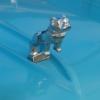-
Posts
144 -
Joined
-
Last visited

Todd W. White posted a gallery image in BMT Member's Gallery - Click here to view our member's albums!
From the album: New Engine for Mack, Jr.

Todd W. White posted a gallery image in BMT Member's Gallery - Click here to view our member's albums!
From the album: New Engine for Mack, Jr.

Todd W. White posted a gallery image in BMT Member's Gallery - Click here to view our member's albums!
From the album: New Engine for Mack, Jr.

Todd W. White posted a gallery image in BMT Member's Gallery - Click here to view our member's albums!
From the album: New Engine for Mack, Jr.

Todd W. White posted a gallery image in BMT Member's Gallery - Click here to view our member's albums!
From the album: "Mackification"

Todd W. White posted a gallery image in BMT Member's Gallery - Click here to view our member's albums!
From the album: "Mackification"

Todd W. White posted a gallery image in BMT Member's Gallery - Click here to view our member's albums!
From the album: "Mackification"

Todd W. White posted a gallery image in BMT Member's Gallery - Click here to view our member's albums!
From the album: General Repairs & Restoration

Todd W. White posted a gallery image in BMT Member's Gallery - Click here to view our member's albums!
From the album: General Repairs & Restoration

Todd W. White posted a gallery image in BMT Member's Gallery - Click here to view our member's albums!
From the album: General Repairs & Restoration

Todd W. White posted a gallery image in BMT Member's Gallery - Click here to view our member's albums!
From the album: General Repairs & Restoration

Todd W. White posted a gallery image in BMT Member's Gallery - Click here to view our member's albums!
From the album: General Repairs & Restoration

Todd W. White posted a gallery image in BMT Member's Gallery - Click here to view our member's albums!
From the album: General Repairs & Restoration
From the album: General Repairs & Restoration

Todd W. White posted a gallery image in BMT Member's Gallery - Click here to view our member's albums!
From the album: General Repairs & Restoration

Todd W. White posted a gallery image in BMT Member's Gallery - Click here to view our member's albums!
From the album: General Repairs & Restoration

Todd W. White posted a gallery image in BMT Member's Gallery - Click here to view our member's albums!
From the album: General Repairs & Restoration

Todd W. White posted a gallery image in BMT Member's Gallery - Click here to view our member's albums!
From the album: General Repairs & Restoration

Todd W. White posted a gallery image in BMT Member's Gallery - Click here to view our member's albums!
From the album: General Repairs & Restoration
From the album: General Repairs & Restoration

Todd W. White posted a gallery image in BMT Member's Gallery - Click here to view our member's albums!
From the album: General Repairs & Restoration

Todd W. White posted a gallery image in BMT Member's Gallery - Click here to view our member's albums!
From the album: General Repairs & Restoration

Todd W. White posted a gallery image in BMT Member's Gallery - Click here to view our member's albums!
From the album: General Repairs & Restoration
BigMackTrucks.com is a support forum for antique, classic and modern Mack Trucks! The forum is owned and maintained by Watt's Truck Center, Inc. an independent, full service Mack dealer. The forums are not affiliated with Mack Trucks, Inc.
Thank you for your support!